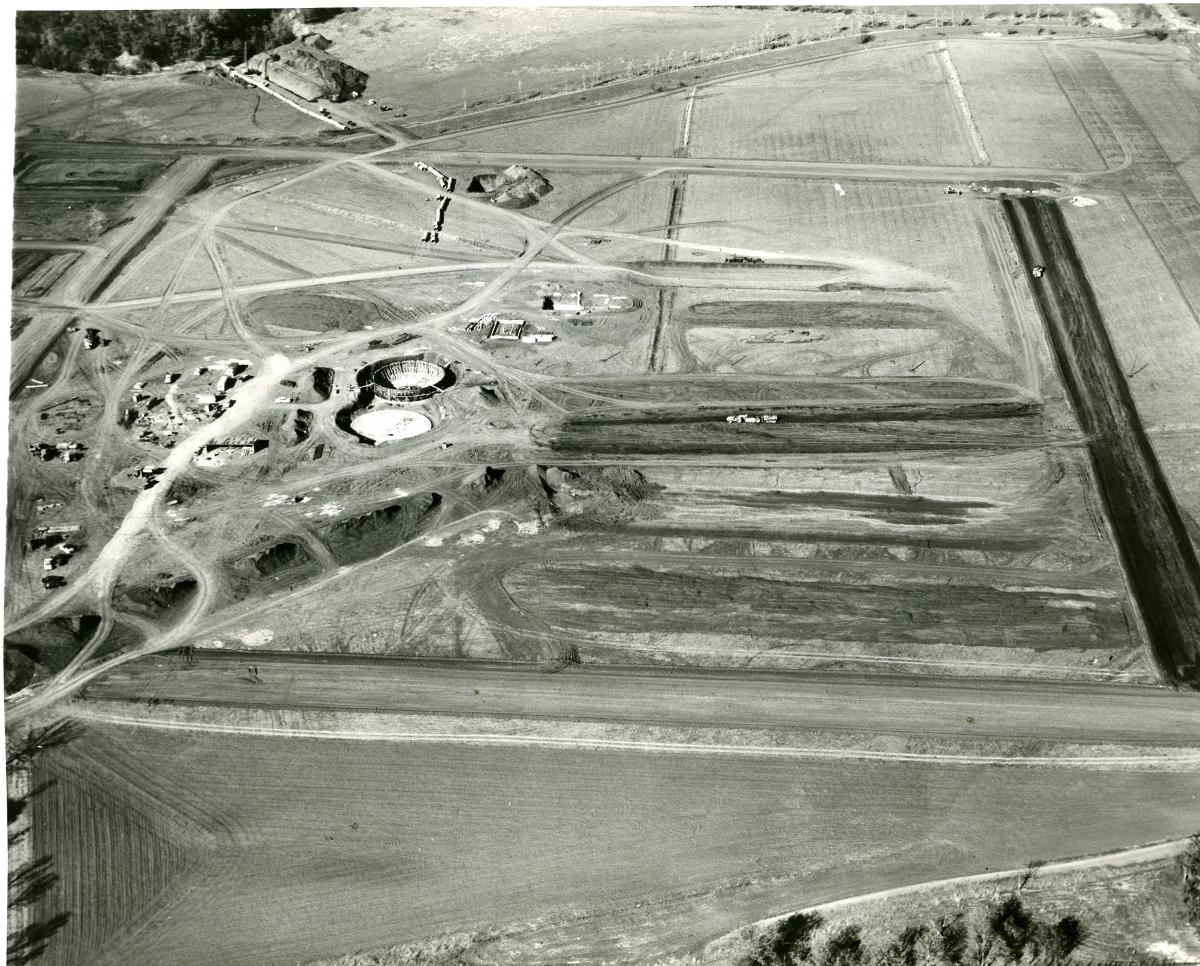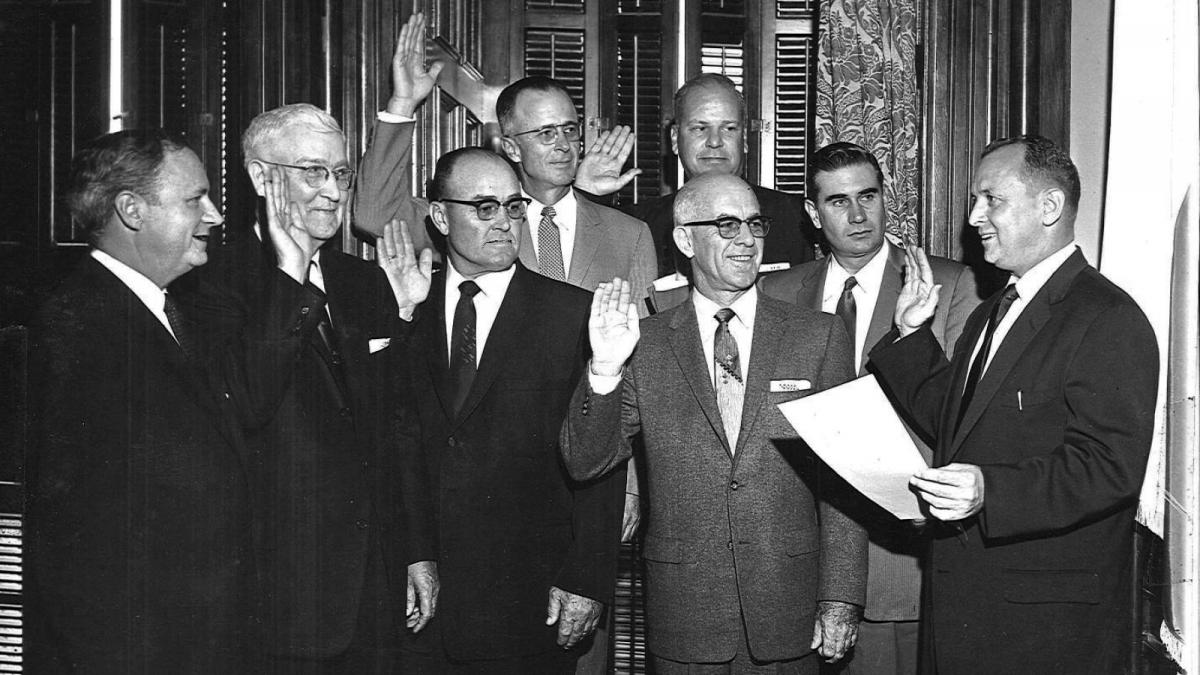The 1950s: People, Plants and Pikes
As we celebrate our 130th anniversary, this series chronicles Freese and Nichols’ achievements decade by decade. These posts are based on A Century in the Works, written by Deborah Sizemore and covering 1894 to 1994, and Continuing the Journey, covering 1995 to 2015.
The rapid growth of Texas metropolises in the 1950s increased demand not only for water, but also for urban expressways to speed workers and shoppers within and between cities.
 Blazing the Turnpike Trail
Blazing the Turnpike Trail
Rather than wait until state finances would permit construction of freeways everywhere they were needed, drivers in major cities were willing to pay tolls to have the convenience of the expressway. In 1953, the newly created Texas Turnpike Authority’s top priority was a project linking Fort Worth and Dallas.
To participate in the design and construction supervision of various facilities comprising the six-lane, thirty-mile highway, including bridges, overpasses, toll booths, and administrative buildings, the Authority engaged a partnership of Fort Worth-Dallas consultants operating under the name Turnpike Engineers. The joint venture included Freese and Nichols, Forrest & Cotton, Powell & Powell, and Joe J. Rady & Company. Paving began in July 1956 and the road opened in 1957. Freese and Nichols’ principal participation in the Turnpike project was the design of 42 bridges over major streams, railroads, streets and highways. The firm also did paving and drainage work. The Dallas-Fort Worth Turnpike is known as Interstate 30 today.
Water Resource Planning
Texas water leaders, among them Simon Freese and Marvin Nichols, produced A Water Policy for Texans in 1952 and The Texas Water Plan in 1968. The value of these documents and their successors as guides to a long-term solution for the state’s water problems increased as ground water reserves and suitable reservoir sites continued to decrease.
Repeat Customers
South Holly and Village Creek Simultaneously with the Turnpike job, work began on a new water treatment plant for Fort Worth, the South Holly plant. The $5.6 million plant, normal treatment capacity 50 MGD expandable to twice that amount, was designed by Freese and Nichols in 1954-55. Construction began in 1956. All facilities, including the South Holly filter plant, the South Holly pump control center, and the Clear Fork Pump Station, were completed in 1958.
Other longtime customers also returned to Freese and Nichols in the mid-1950s for additional water work. At Abilene, the firm designed and supervised the 1956 enlargement of the Grimes (downtown) water filtration plant from 8 MGD to 16 MGD. A 7.6 MGD filter plant was designed for Fort Hood, a 6 MGD facility for Greenville, and the first 4 MGD phase of a plant for Denton.
‘Smartest Man I Ever Knew’

Under Freese and Nichols’ supervision, construction of the Arlington dam began in May 1956 and was completed in July 1957. Thanks to the heavy rains that drenched Texas in the spring of 1957, ending the seven-year drought, Lake Arlington did indeed fill in a month–in twenty-six days, to be precise. Vandergriff said the Lake Arlington experience convinced him Marvin Nichols “was the smartest man I ever knew.”
 TWDB Chairman
TWDB Chairman
A six-member Texas Water Development Board was created on Dec. 30, 1957. Governor Price Daniel appointed Marvin Nichols the first chairman of the Board. Nichols served until 1963 and earned a distinguished service citation for his years as Board chairman. Under his leadership, the Board’s powers to support local water districts were broadened.
In 1962 the Board was authorized to contract for conservation storage space in reservoirs on Texas streams. The Board also was permitted to contract for water filtration, treatment, and transportation facilities. Its investments in these facilities were to be recouped by sales, transfers, or leases to local water districts.Those who served with Nichols recognized his expertise in the field of water conservation and development, and often remarked on the wisdom, sense of humor, and vision he brought to the work.


 Blazing the Turnpike Trail
Blazing the Turnpike Trail TWDB Chairman
TWDB Chairman